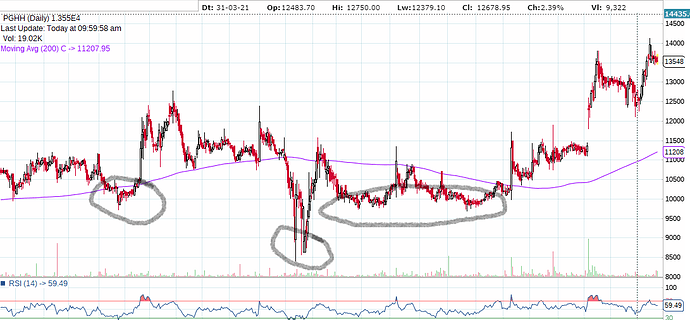One input I wanted to give to the lucky holders of this stock whom I envy 
I good chunk of the revenue and profit comes from Whisper. India has somehow not had widespread use of menstrual cups in the past. With increasing awareness about menstrual cups, to me it seems more and more women will opt for this since it’s a better product both convenience wise and for the environment. And each women switching from sanitary napkins is a regular client lost for pghh. Someone who was buying pghh’s product every month suddenly stops buying. In some respects, similar to what digital camera did to Kodak. Although the loss would be somewhat compensated by new consumers as more Indians come out of poverty.
1 Like
I think it’s hard a customer switch their products … whisper is very strong brand … it’s not like Kodak … P&G is very innovative and resist any economic cycle…
Since a cup (made of silicone, same stuff that’s used to make surgical implants against pads that are laden with allergy causing chemicals ) can be used for years together while pads are bought every month, pghh would never want to introduce menstrual cups. And a lot of startups working in the field of female hygenie are pursuing this opportunity aggressively. I’d suggest searching menstrual cup in the Amazon app and reading the reviews. And I sincerely hope and pray more females start using them since they are so much better than pads for our mother nature.
I second this. At least 4-5 of my close girl friends i talk to have stopped using or plan on switching to Cups instead of Pads. Although like you said the amount of women who’ll move from Cloth to Pads is much higher than those who’ll switch from Pads to Cups. For a company of PGHH’s scale and distribution network would not hurt to venture into this as a product though. A possible reason could be partially shutting off recurring revenue of pads if they do it on their own.
Some quick thoughts on this,
-
The main problem in India is the lack of education/awareness of using sanitary napkins along with the taboo associated with periods. Keeping this in mind, there is a great chance when women that have been using cloth get aware about female hygiene products, sanitary napkins will be the first thing. This is further aided by the governments thrust on making more women aware about sanitary napkins and offering them at really low rates.
-
Quick dip stick survey suggests not all women are comfortable using cups.
-
Cups have existed for decades without really catching on. Even in western markets where sanitary napkins have a far higher penetration. I wonder why? In any case in India women getting to know and using sanitary napkins would be the starting point due to lack of education about the product.
Disc: Invested and adding since the last 1 year.
4 Likes
Nice article and good campaign.
Disc: Invested and further building position
1 Like
This is one of very few companies which hardly gave any entry opportunity in last year’s crash.
What is your strategy to increase allocation in such highly valued businesses which do not even give significant dips?
My strategy to invest in richly valued companies is to invest in them over multiple years by SIPing in them. So, I SIP for 12-15 months when the stock prices of such companies are moving sideways or moving up marginally. I also reinvest all the dividends earned.
Once I build my desired position, I stop SIPing and let compounding take over. If the size of the position goes below what I need it to be, I start SIPing again.
So, nothing fancy really. This process has worked out decently for me as PGHH has been compounding for me between 22-24% CAGR over ~4 years (including dividends earned and reinvested).
4 Likes
While I do not own PGHH, we do own in our family portfolio. If we see the price chart for the last 2 years, there were opportunities to buy. Simple strategies like buying below 200 DMA, RSI below 30 would have netted nice returns.
However the most simple strategy is buying (good companies with decent management, low penetration/business opportunities) when you have money! My PF is build on “buy when you have money” strategy.
When I asked my wife about possible disruption (menstrual cups, cloth pads, etc.) she says most folks don’t know anything yet and there is huge growth ahead as awareness is low beyond metro cities and even for city folks the convenience is valued more.
5 Likes


